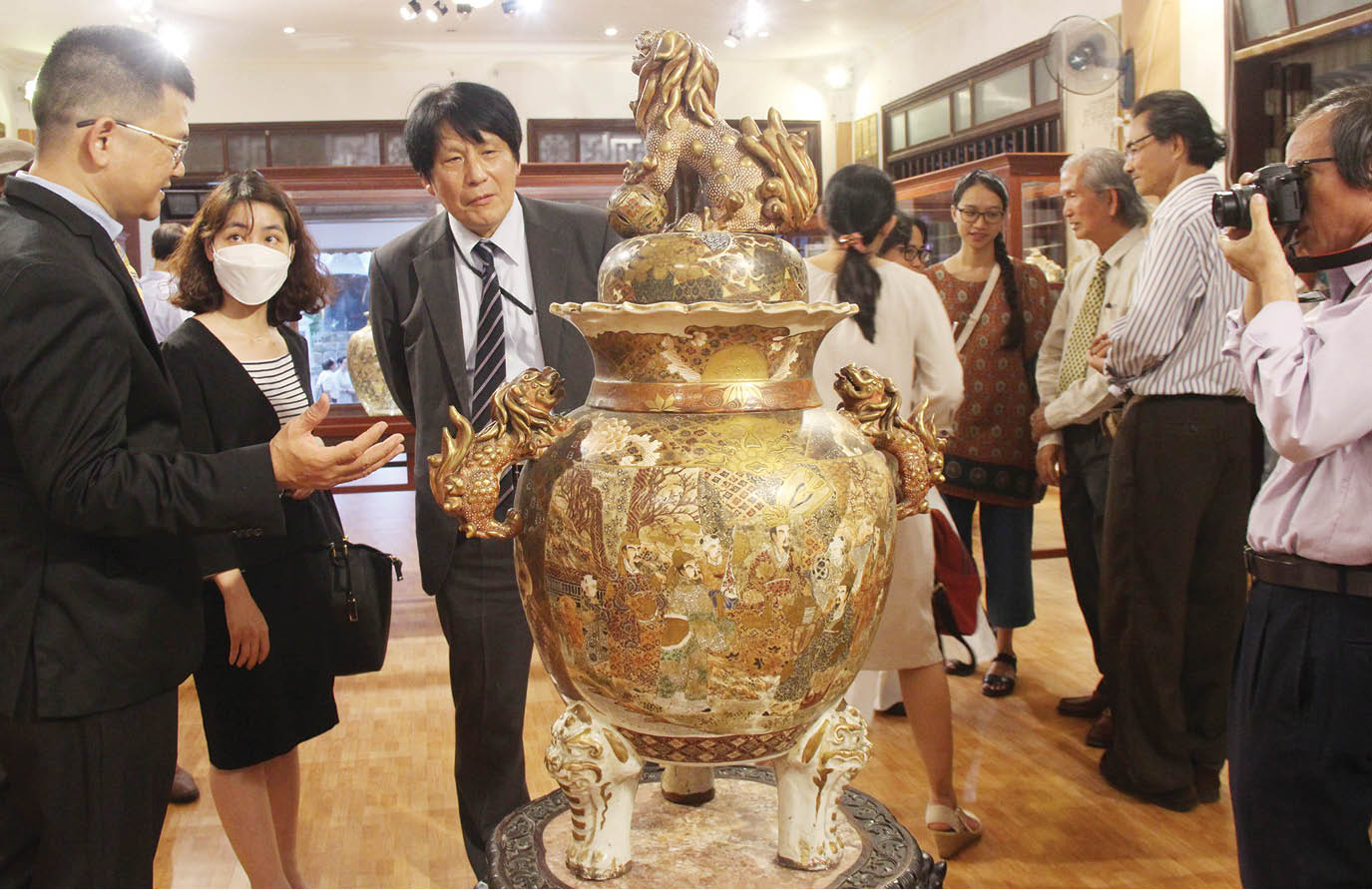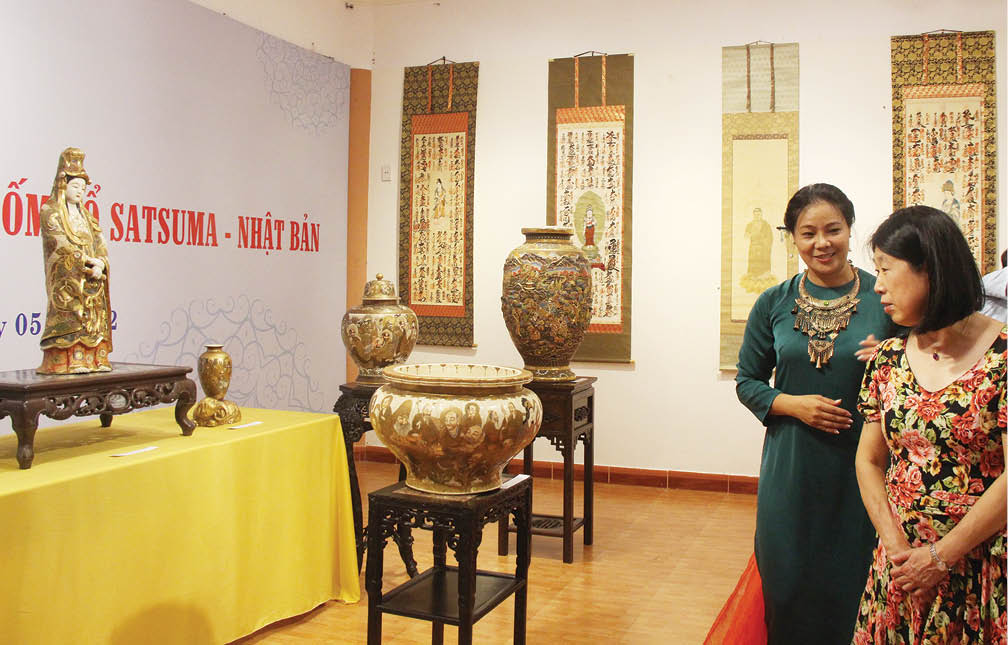
A Satsuma pottery vase on display at the exhibition
The collection of ancient Japanese Satsuma pottery of researcher Tran Dinh Son and friends has just been launched at the exhibition themed "Buddhist art on ancient Japanese Satsuma pottery".
In the space of Lieu Quan Hue Buddhist Cultural Center (15A Le Loi, Hue City) where the exhibition takes place, viewers seem to be lost in another world, not only in the splendor and luxury of the artifacts but also in each story and message on the pottery.
More than 200 artifacts including a system of Buddha statues, sacred animals, urns, vases, tea sets, bowls, and dishes... are presented in a methodical and elaborate manner by the owner. Viewers seem to be fascinated and amazed by the uniqueness and rarity of each artifact.
All are Satsuma pottery - one of the high-class pottery lines that first appeared under Emperor Meiji’s reign (1868-1912). The pottery is classified into two categories: Kyo-Satsuma and Gosu-Blue Imperial Satsuma.

Visitors viewing the exhibition space of ancient Japanese Satsuma pottery
Satsuma is famous not only because of the level of difficulty in making large pottery, the skillful hand-baking, the Moriage brocade drawing techniques with dragons, the vivid brush motifs, or delicate Nishikie gold emulsion... Satsuma also embodies democracy and openness through the seals attesting to a famous pottery brand and linking the names of artists who influenced tea art, fine art decoration, and European and American painting at the end of the 19th century.
Particularly, the objects on display focus on the Buddhist theme in a vivid and attractive way. There, viewers can witness the image of Buddha's life on large plates, or bowls portraying Buddha's lecture; Buddhas and Bodhisattvas with peaceful faces next to the fierce-faced Arhats who have just conquered dragons or tigers...
Researcher Tran Dinh Son said that the Japanese adopted Buddhist philosophy, metaphors and symbols from China very early through statues, objects and paintings. The culmination of this was the 16th century Ukiyo-e painting technique, which became invaluable when it came to depicting the world of things that were both vivid and illusory, which the nobility of that time loved to use for decoration or worship.
Inheriting this technique, which was in decline during the Meiji period, Japanese Satsuma pottery artisans have continued to undertake the mission of spreading the culture and religion of Japan to the world and constantly attracting collectors from all over the world.
Many pottery lovers were captivated when they saw the pottery artifacts at the exhibition by researcher Tran Dinh Son and his friends. For a long time, when it comes to Japanese pottery, everyone knows that it is the place of origin of many fine pottery lines for decoration and daily life. Japanese pottery is also ranked as superior when compared to many other types of pottery in the world.
Mr. Nguyen Thinh (Hue City) was very surprised when coming to see the Japanese Satsuma ceramic exhibition because he had heard about this pottery line a lot, but this was the first time he witnessed it with his own eyes. His impression was that the drawings on the artifacts are shown subtly, depicting the spirit of Buddhism.
“Looking at these potter artifacts, we can see the development in skillful creation techniques as well as the way to convey the culture and philosophy of the Japanese people. It's truly high-class!", Mr. Thinh commented.
Researcher Tran Dinh Son added that Vietnam and Japan have had a long-standing trade exchange, and that exchange is still developing and close to this day. Therefore, when this exhibition is launched, the aim is to help the public have the opportunity to enjoy and have a correct view of Buddhist art through ancient Japanese pottery, especially during the golden reign of Emperor Meiji.
Story and photos: NHAT MINH
